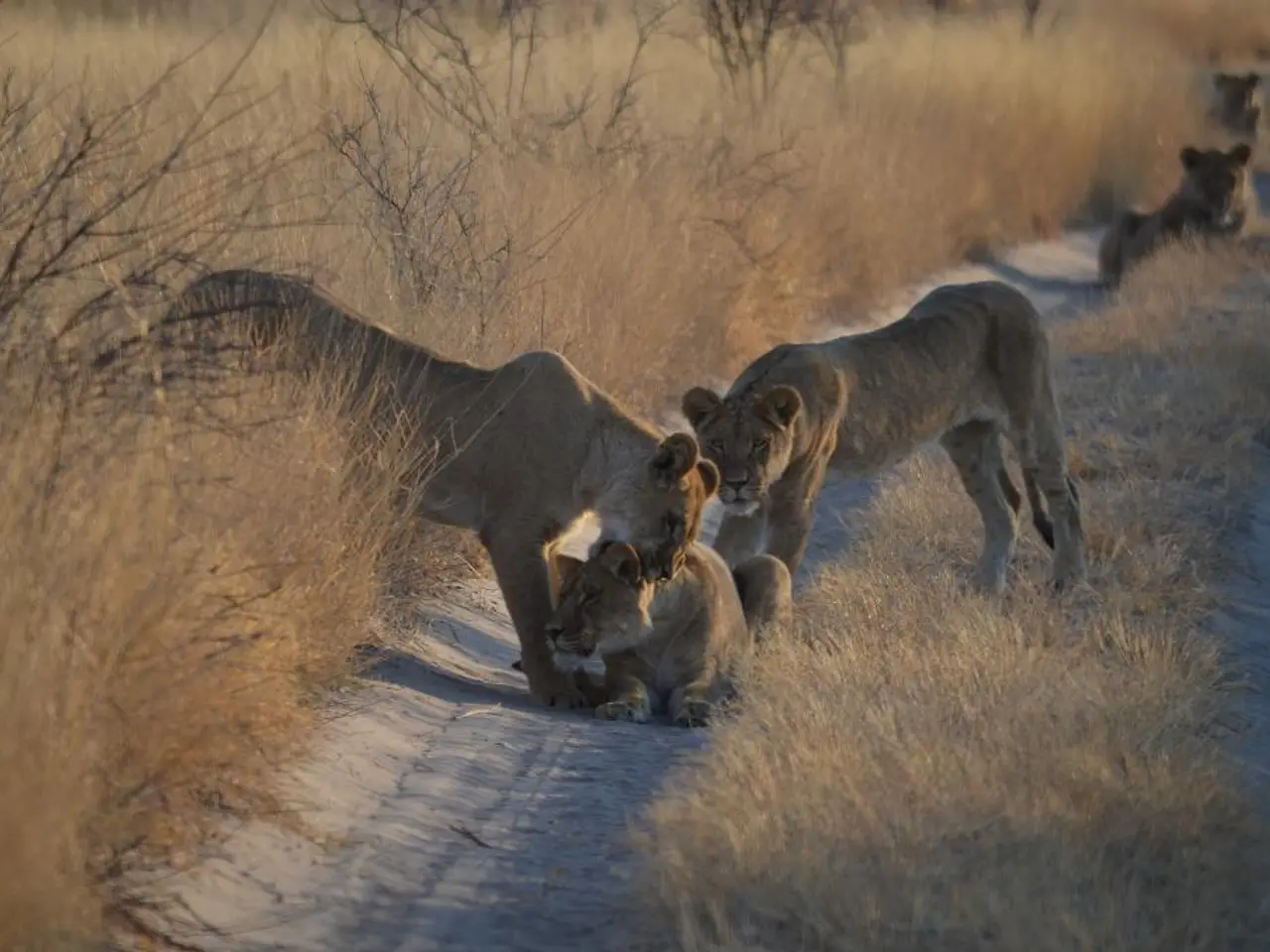Tiger Families in India Adapt to Tourism During International Tiger Day 2025
In India's densely populated tiger reserves, large tiger families are becoming a common sight, thanks to increased tiger population density, well-protected habitats, and sufficient prey availability.
Experts suggest that this phenomenon is a natural response to abundant food and undisturbed habitats. As tiger populations rise, such as from 1,411 to 3,682 across India due to improved governance and community participation in conservation, it becomes more common to observe bigger litters and family groups.
One such example is the "Gothangaon Express" family in Maharashtra’s Umred-Karhandla-Paoni sanctuary. This well-known family has multiple litters within a single family, highlighting the thriving tiger dynasties in India.
Tiger reserves like Kaziranga and Sundarbans have also seen expansion in area and population. Kaziranga reports a high tiger density of 18.65 tigers per 100 sq km, while Sundarbans is set to become India's second-largest tiger reserve. These expansions strengthen tiger habitat connectivity and safety, providing the necessary conditions for larger family units to thrive.
In these reserves, tigers have access to adequate space and prey, which lowers cub mortality and allows relatives to remain in proximity. For instance, an extraordinary situation occurred in 2022 at Sanjay Dubri National Park, where T28, a dominant tigress, took in her sister's orphaned cubs, earning the name Mausi-Maa (aunt turned mother).
However, it's important to note that while India has 380,000 sq km of potential tiger habitat, less than 20% of this area is adequately protected to support tigers in reasonable densities.
Sivaram, a financial advisor and award-winning wildlife photographer, finds the interaction of cubs with their mother in the jungle fascinating. Forest guide Lalji Bhai Gupta has also had close encounters with tiger families, such as a family of seven tigers he encountered while riding his motorbike in Sanjay Dubri National Park.
Conservation efforts, such as the mobile ban in Maharashtra's parks, which indirectly ensures that drivers and guides do not take vehicles too close to animals, play a crucial role in protecting these majestic creatures and their habitats. As we continue to work towards expanding and better managing our tiger reserves, we can expect to see more of these incredible large tiger families in the future.
Home-and-garden magazines might feature stories about the expanding tiger reserves in India, focusing on the thriving tiger families and dynasties that have emerged. Travel guides could also highlight these reserves, such as Kaziranga and Sundarbans, as top destinations for nature enthusiasts seeking unique wildlife encounters, like experiencing the "Gothangaon Express" family or witnessing the extraordinary situation of T28, the dominant tigress who adopted her sister's orphaned cubs in Sanjay Dubri National Park.




